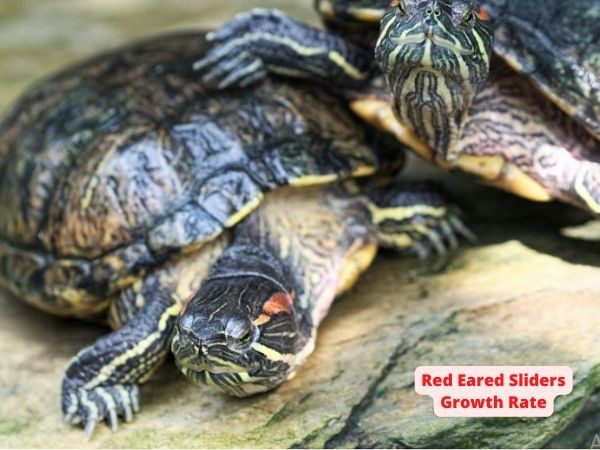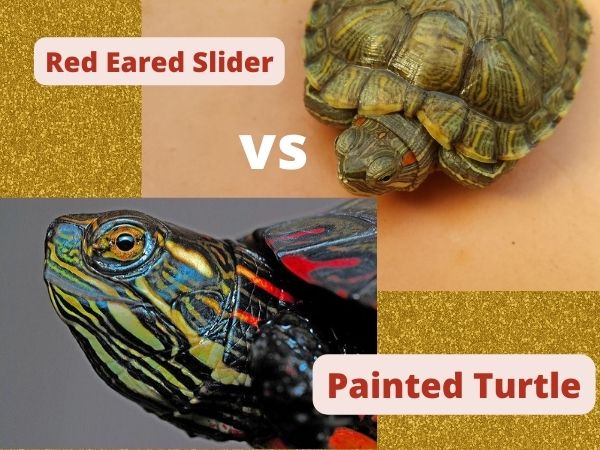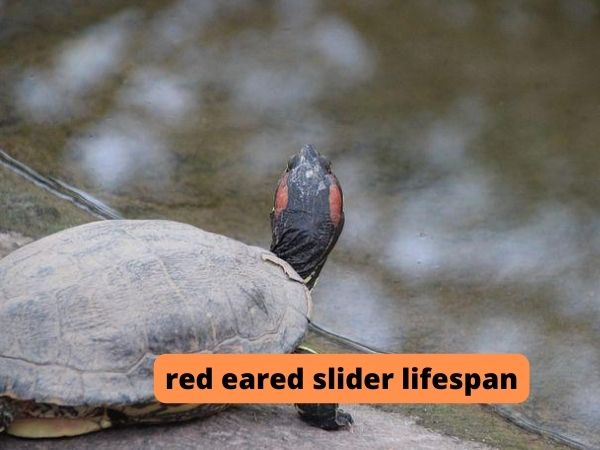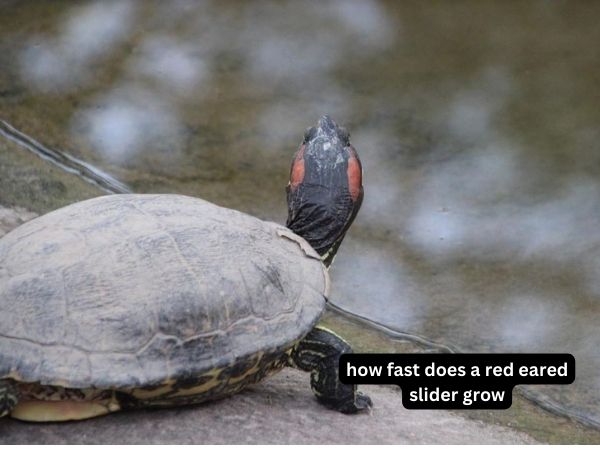Red Eared Sliders Growth Rate: How Fast Do They Grow?
Today we discuss Red Eared Sliders Growth Rate. Thanks to their pleasant and friendly nature, red eared sliders are the top turtle species for a pet. These turtles make great pets in both indoor and outdoor conditions. However, the tiny turtle species is indeed amongst the tiniest turtle breeds in the US.
When you first get a red eared slider from the pet shop, it will be mostly 2 inches long. And it doesn’t grow into monster size at all. Hence many owners ask, “How fast do red eared sliders grow?”
Ideally speaking, red eared sliders may grow to the size of a standard dinner plate. Also, during their youth, they will grow 3 inches per year. But it slows down to 1 inch per year as they reach adulthood. And when they are fully grown, a female will grow from 10 inches to 12 inches, and males can grow up to 8 to 10 inches.
However, there’re many factors such as proper diet, temperature, lighting arrangement, and ambiance that directly affect the growth rate of red eared sliders.
How Fast Do Red Eared Sliders Grow
[amazon box=”B08P3H98YN” grid=”1″ price=”none”]
Red eared sliders are amongst the fastest-growing turtle species worldwide. You can expect them to reach their fully grown shape in less than 10 years. While 10 years may seem a long time for humans, for turtles, it isn’t so long.
Also, these species will grow the fastest during their babyhood and youth. As they start growing old, their growth slows down rapidly.
A red eared slider will grow 1-1.75 inches in its first years. That’s why when you get them from a pet shop, you will mostly get a 1.5 to 2.5 inches red eared slider. They will reach 2 inches to 2.5 inches by their second birthday.
The size almost doubles up to 4.5 inches by age 4 to 5. By the time they attain maturity, a male red eared slider will grow around 8 to 10 inches. On the contrary, a mature female will grow around 10 to 12 inches.
Both species will need 8 to 10 years to attain maturity and reach their full-grown length. However, expect that two red eared sliders will have variable growth rate even if they are kept in the same tank and has the same diet and lighting.
The growth rate variation may be from 1 to 2 inches, and it is pretty acceptable.
The Growth Rate of Red Eared Sliders by Age:
| Age | Expected length |
| 1 | 1-2 inches |
| 2 | 2.5 inches |
| 3 | 2.5-3.5 inches |
| 4-5 | 3.5-5 inches |
| 6-7 | 5-7 inches |
| 7-10 | 7-12 inches |
Growth Rate Comparison among Red Eared Sliders and Other Turtles:
When you bring your pet-friendly home, showing concern about its growth rate is pretty normal. While the red-eared sliders’ growth rate is not so slow, most turtle species follow the same path in captivity and wilderness.
For instance, painted turtles can grow up to 8 inches during their lifespan. The growth difference between male and female painted turtles isn’t significant.
Box turtles are amongst the tiniest turtle species, and a fully grown adult will reach up to 4.5- 6 inches mostly. Surprisingly, the largest box turtle recorded was 13 to 16 inches which are 3X more than its standard length. Impressive!
Snapping turtle isn’t a highly popular species for captivity, but you can see them at a few homes. The average length of an adult can be 8 to 14 inches, with females growing considerably bigger than their male counterparts. They will reach their full length by 12-14 years of age.
Softshell turtles grow the biggest among the captive turtles as females reach from 8 to 25 inches. The males are significantly small-sized, with 7 to 12 inches in length at best. And lastly, map turtles’ females can grow around 12 inches while males merely reach 5 to 7 inches in length.
Growth Rate Chart of Different Turtle Species
| Turtle Species | Fully Grown Length (In inches) |
| Red Eared Sliders | Female: 10-12 Male: 7-10 |
| Painted Turtles | Western Painted Turtles: 8-9 Southern Painted Turtles: 5-6 |
| Map Turtles | Female: 10-12 Male: 5-6 |
| Box Turtles | Female: 4.5-6 Male: Same as the female |
| Softshell Turtle | Female: 8-25 Male:5-12 |
The chart gives a clear idea of the growth rate variations among different turtle species. Plus, you can see that female turtles are generally bigger than male turtles. This happens due to mainly biological evolution.
However, many factors promptly affect the turtle’s growth rate.
Influential Factors for Red Eared Sliders Growth Rate
Apart from their age, diet and basking arrangement directly controls the growth rate of red eared sliders.
Red Eared Sliders Diet:
No doubt, diet plays the biggest role in a turtle’s growth rate. Red eared sliders eat vegetables, fruit, and meats as they are omnivorous. However, you have to ensure that your reptile friend is enjoying a proper and balanced diet.
When you prepare the diet chart, you can include the following item for red eared slider-
- Pellets
- Vegetables
- Meat
- Fish
- Live insects
- Worms
You should mix the food items instead of relying on one item, such as pellets. It would help the turtle to get a nutritious and balanced diet at ease. Also, at times you may feed them live fish and insects to help them feel wilderness.
Basking Arrangement:
Like all turtles, basking arrangement, particularly UVB lighting, affects the growth rate of red eared sliders. UVB light produces Vitamin D3. It is essential for the turtle’s calcium growth and strengthens the shell. If the basking spot lacks proper UVB lighting, it will suffer from Vitamin D3 deficiency and may experience premature death.
You can choose from Mega Ray and Zoo Med since both manufacturers come with an incredibly long line of quality UVB lights.

Conclusion
How fast do red eared sliders grow?
You can expect the males to grow 8 to 10 inches and females to grow 8 to 12 inches by becoming 7-10 years old. Most red eared sliders will grow around 1.5 to 2 inches during their first year, and the growth rate gets slower as they become older.
Compared to other turtles, the red eared slider has a pretty fast growth rate. However, you must ensure proper diet and UVB lighting to help them grow better.



